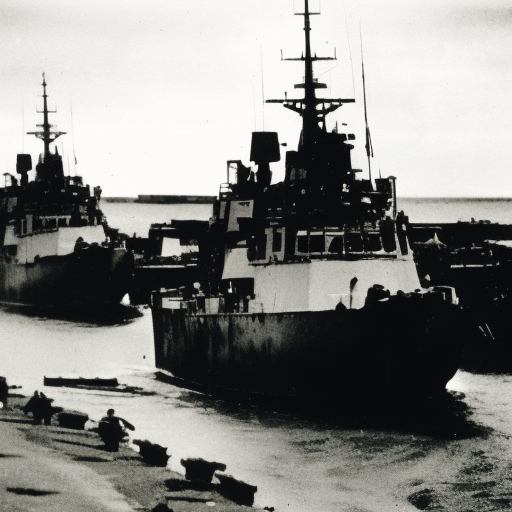The Normandy Landings: A Turning Point in World War II
The Normandy landings, also known as D-Day, were a series of military operations that took place on June 6, 1944, during World War II. This massive amphibious assault marked the beginning of the Allied invasion of German-occupied Western Europe and was a crucial turning point in the war.
Background
By 1944, the Allies had been planning a major invasion of Western Europe for several years. The goal was to establish a second front against Nazi Germany and relieve pressure on the Soviet Union, which had been fighting the Germans on the Eastern Front. The invasion was originally scheduled for May 1944 but was delayed due to poor weather conditions.
Preparations
Extensive planning and preparation were undertaken by the Allies to ensure the success of the invasion. A multinational force, led by General Dwight D. Eisenhower, was assembled. The invasion force consisted of over 156,000 troops from the United States, United Kingdom, Canada, and other Allied nations.
The Invasion
In the early hours of June 6, 1944, thousands of Allied troops landed on the beaches of Normandy in northern France. The invasion involved five main landing zones, codenamed Utah, Omaha, Gold, Juno, and Sword. The American forces landed at Utah and Omaha, while the British and Canadian forces landed at Gold, Juno, and Sword.
The Battle
The German defenders were well-prepared and heavily fortified along the coastline, making the initial assault extremely challenging for the Allies. The landing at Omaha Beach, in particular, faced fierce resistance and heavy casualties. However, through sheer determination and bravery, the Allied forces managed to establish a foothold and push inland.
Breakout and Liberation
After securing the beachheads, the Allies began a massive operation to break out of the Normandy region and advance further into France. Over the following weeks and months, the Allied forces fought their way through the heavily defended German positions. The liberation of Paris on August 25, 1944, marked a significant milestone in the Allied advance.
Significance
The Normandy landings had a profound impact on the course of World War II. The successful invasion allowed the Allies to establish a firm foothold in Western Europe and begin the liberation of occupied territories. It also forced the Germans to divert significant resources to defend against the Allied advance, weakening their overall position.
Casualties
The Normandy landings were a costly operation, with both sides suffering heavy casualties. The exact number of casualties is difficult to determine, but it is estimated that the Allies suffered around 10,000 casualties, including 4,414 confirmed dead. The German casualties are believed to be between 4,000 and 9,000.
Legacy
The Normandy landings are remembered as one of the most significant military operations in history. The bravery and sacrifice of the soldiers who participated in the invasion are honored to this day. The success of the invasion paved the way for the eventual defeat of Nazi Germany and the end of World War II in Europe.
In conclusion, the Normandy landings were a pivotal moment in World War II. The invasion of German-occupied Western Europe by the Allied forces marked the beginning of the end for Nazi Germany. Despite the heavy casualties, the successful establishment of a second front allowed the Allies to push forward and ultimately liberate Europe from Nazi control. The Normandy landings remain a testament to the courage and determination of the soldiers who fought in one of the most significant military operations in history.












